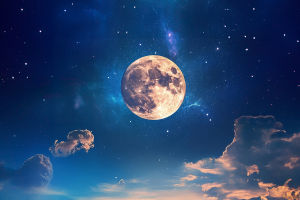Have you ever imagined that a volcano could "sing" or produce mysterious sounds? It sounds like something from a fantasy movie, but in fact, many volcanoes around the world create strange noises that intrigue scientists and nature lovers alike.
Let's explore these fascinating "songs" of the Earth and uncover what causes these unique sounds.
What Are Volcano Sounds?
When we think of volcanoes, usually erupting lava, ash clouds, and explosive blasts come to mind. But volcanoes also generate a variety of sounds, some loud and terrifying, others soft and eerie. These sounds range from low rumbles to deep humming, sometimes even musical tones.
These noises are caused by the movement of magma, gases escaping, and the interaction of volcanic materials with the air and earth. The term "volcano singing" is a poetic way to describe these natural sounds.
How Do Volcanoes "Sing"?
The main reason volcanoes produce sound is the vibration caused by magma movement and gas pressure inside the Earth's crust. When magma rises toward the surface, it pushes gases out through cracks, causing vibrations that travel as sound waves.
Some volcanoes produce continuous low-frequency sounds known as harmonic tremors. These tremors can last for hours or days and sound like a deep hum or drone. They often signal an impending eruption as magma moves underground.
Besides harmonic tremors, volcanoes can create explosive bursts, whistles, or even sounds resembling musical notes when gases escape through narrow vents. The shape and size of volcanic openings influence the pitch and tone of these sounds, similar to how different wind instruments produce different notes.
Scientific Studies on Volcano Sounds
Researchers use sensitive instruments called seismographs and acoustic sensors to record volcanic sounds and vibrations. These tools help scientists understand what's happening inside the volcano without being in danger.
For example, the 2018 eruption of Kilauea in Hawaii was closely monitored using sound data. Scientists found that changes in volcanic sounds helped predict lava flow patterns and eruption intensity.
Some experts believe that analyzing volcano sounds could improve early warning systems, giving people more time to evacuate safely. It's a fascinating example of how listening to Earth's "voice" can protect lives.
Natural Phenomena Similar to Volcano Singing
Volcano sounds are not the only natural "songs" on Earth. Similar vibrations and noises come from glaciers, earthquakes, and even strong winds passing through caves or mountain passes.
For example, some glaciers produce deep rumbling sounds as ice cracks and moves. These sounds can be compared to volcanic tremors in frequency and tone.
Understanding these natural sounds helps scientists learn more about Earth's dynamic systems and how they connect.
Can Humans Hear Volcano Songs?
Most volcanic sounds are very low-frequency and often below the range of human hearing. This means we can't directly hear many of the "songs" without special equipment.
However, when volcanic explosions or gas bursts occur near the surface, people living nearby may hear loud booms, whistles, or rumbles.
With modern technology, recordings of volcano sounds can be amplified and studied, allowing us to "listen" to the Earth's mysterious music.
The Mystery and Beauty of Volcano Sounds
The idea that a volcano "sings" invites us to see nature in a new way—not just as destructive but as full of subtle and surprising beauty.
These sounds remind us that Earth is alive in many senses, constantly moving, changing, and communicating through vibrations we rarely notice.
Whether it's the deep hum of magma or the sharp whistle of escaping gas, volcano sounds connect us to the planet's powerful inner forces.
Have you ever heard about volcanic sounds or experienced nature's mysterious noises? Next time you read about volcanoes or visit volcanic regions, imagine the secret "songs" playing beneath the surface. What do you think these sounds tell us about our planet? Share your thoughts and let's keep exploring Earth's hidden symphony together!


